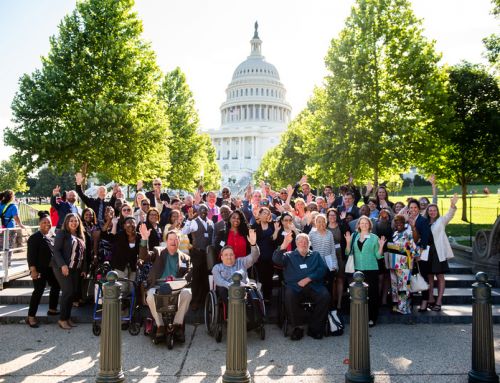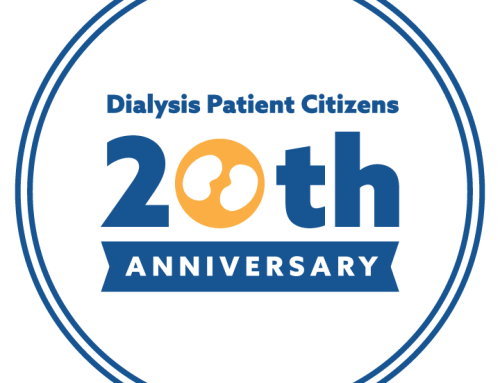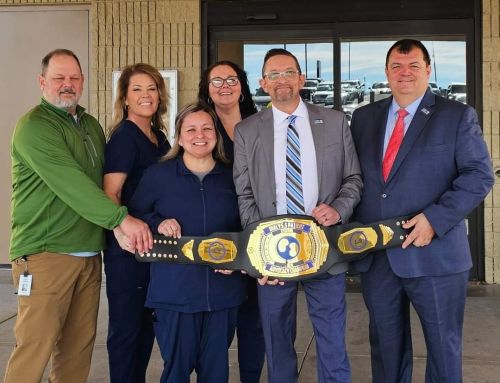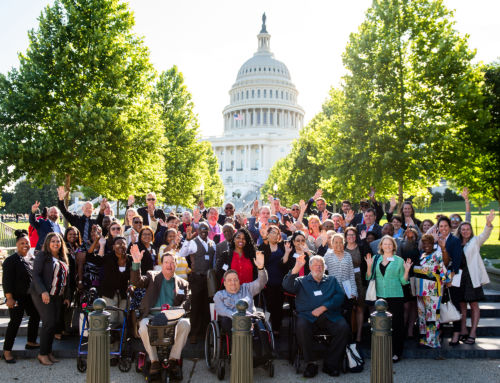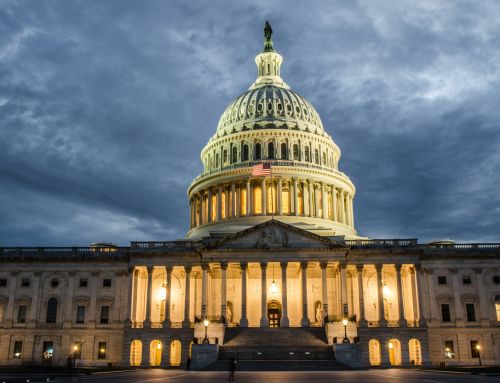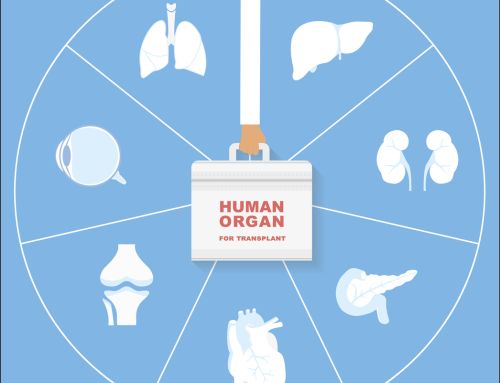Ms. Elizabeth Fowler, Deputy Administrator
Center for Medicare and Medicaid Innovation
2810 Lord Baltimore Drive
Windsor Mill, MD 21244.
Dear Ms. Fowler:
We are seeking a bottom-up review of the ESRD Treatment Choice (ETC) demonstration including consideration of other options to pilot innovations to improve home dialysis take-up and kidney transplantation. Like other kidney advocates, we appreciated the long-overdue cabinet-level attention that was paid to these issues under the Trump administration. But, the ETC program is flawed in concept and execution, and represents a missed opportunity to address pressing problems.
As explained in greater detail below, we think it would be wise to pause this project and explore more conventional approaches. In particular, we would like to see CMMI endowment funds invested to address specific barriers to home dialysis and transplantation. Two approaches to addressing transplantation barriers—dental treatment for transplant candidates and reimbursement of all expenses for living kidney donors—are promoted primarily by non-kidney stakeholders whose advocacy cannot be dismissed as self-serving, so we’re especially disappointed that these proposals were not embraced by the previous administration.
This program differs from most previous CMMI demonstrations in that it does not utilize grants or add-on payments to improve patient care. In fact, it appears to be the first CMMI demonstration with a provider reimbursement cut built into it. An analysis conducted by the Discern consultancy for Kidney Care Partners found that for providers to break even over the implementation period, the average Home Dialysis rate would need to rise from 11.2% to 28.9%, and the proportion of patients waitlisted for Organ Transplant would need to rise from 18.2% to 44.2%. Not surprisingly, the economic analysis appended to the regulation assumed a massive cut to kidney care funding.
We advocate for a patient population that is disproportionately from minority ethnic groups and economically disadvantaged backgrounds. Dialysis patients are frequently singled out for discrimination by employers and commercial insurers. As such, when an unusual policy intervention is deployed for the first time on ESRD patients we tend to be skeptical. We ask, are similar interventions proposed for diseases experienced by beneficiaries who are disproportionately white, like Type I diabetes; or for specialties that serve disproportionately affluent beneficiaries, like Allergy Medicine. Here, the answer is no.
In our view, the ETC demo has four major faults:
- ETC bets all efforts toward improved care on a single intervention, despite the fact that most Medicare chronic disease care demos have not succeeded in improving outcomes or lower costs.
ETC’s placement of a large bet on one approach—a bonus-and-penalty payment adjustment for dialysis clinics and nephrologists—carries a high risk of failure, especially since this methodology failed in the Premier hospital P4P demo from which it is adapted. Moreover, the success rate of Medicare chronic care demonstrations is poor. Of 18 disease-specific Health Care Innovation Award (HCIA) grants, only 7 showed statistically significant decreases in cost, and only 2 showed improvements in quality metrics. The Medicare Coordinated Care Demonstration yielded just one project that improved outcomes and reduced costs out of 15 different sites. As explained more fully below, we urge CMMI to solicit ideas for multiple interventions at multiple sites.
- ETC undermines the Affordable Care Act’s separation between provider reimbursement cuts and delivery system reforms.
The ACA maintained a strict separation of provider cuts, which were cabined in subtitle E of Title III, from health system transformation programs, contained in subtitle A. Notably, although the Accountable Care Organization was originally conceived as part of the Sustainable Growth Rate mechanism, the ACA completely divorced the two. These separations helped to build support for payment reforms and to avert “delivery reform fatigue” among providers.
It is hard to imagine a Medical Home program that utilizes cuts to family doctors instead of add-on payments; or a Hospital Value-Based Payment program that requires the industry to reduce mortality by 250% to break even. If CMMI programs become trojan horses for provider cuts, support for payment reform will evaporate.
- ETC makes a flawed assumption about barriers to home dialysis and therefore misses opportunities to address the full range of barriers.
Medicare’s ESRD program—as well as the standard of care—require facilities and nephrologists to educate prevalent patients about home dialysis options. We agree that providers doing an exceptional job at identifying, cultivating, and placing candidates for home dialysis should be rewarded; and laggards should be penalized. But the ETC program’s exclusive focus on this aspect—Secretary Azar said that the main barrier to home dialysis is over-capacity of in-center facilities—ignores barriers existing at the CKD and transition stages, as well as patient preferences. Happily there are voluntary kidney care demonstrations that should address upstream factors, but we expect that the main predictor of success on ETC metrics will be the participation of facilities and doctors in those programs.
We think a redesigned demonstration should test interventions aimed at all barriers, and particularly those upon incidence that can lead to in-center inertia among patients. For instance, hospital-based transitional care units, instead of defaulting to in-center dialysis for patients who “crash” into kidney failure, could initiate immediate training in home modalities. These could be supported through grants, enhanced DRG payments, or new episode payments. Surgery to place PD catheters could be compensated proportionate to its value to patients and to the Medicare programs. CMS could test PD as a treatment for acute kidney injury (AKI), to avoid defaulting to in-center dialysis for the approximately one-half of AKI patients whose kidneys fail permanently.
CMMI must also recognize the understandable safety concerns patients have about dialyzing at home. If we have learned one thing about Americans this past year it is that there is wide variation in tolerance for risk—and beliefs about risk are strongly held. Risk-averse ESRD patients might be accommodated with a demonstration of staff-assisted home dialysis—a pilot project that would also create jobs.
- By diverting resources to beneficiaries who don’t need extra help, ETC misses an opportunity to reduce disparities.
The random assignments to ETC intervention regions too often “carry coals to Newcastle” by focusing scarce resources on affluent regions. The design of this demonstration is intended to produce disparities in care—national dialysis chains are incentivized to provide improved care to a designated subgroup of patients. To the extent that this subgroup excludes minorities, the demonstration can exacerbate racial disparities. The Discern analysis conducted for Kidney Care Partners found that Medically Underserved Areas were less than half as likely to be assigned for intervention as adequately served areas. We do not know the racial composition of the HRRs selected for intervention vis a vis comparison HRRs, but we suspect that the targeted beneficiaries will be disproportionately white. We urge you to ask career staff to investigate this.
As I explained in a commentary for AJMC.com, Contributor: The Wrong Way to Design a Medicare Mandatory Demonstration (ajmc.com) it will be all but impossible for this design to reduce racial disparities in transplant outside the South. Given the recent AHRQ-funded research findings that current Medical Home sites disproportionately serve healthy and affluent communities, the last thing Medicare needs is a second such program.
In our 2019 comment letter, we urged the Agency to seek inspiration for a redesign from the 1990 Civil Justice Reform Act (CJRA). The CJRA was a demonstration project authored by then-Senator Joe Biden when he chaired the Senate Judiciary Committee and was known colloquially within the legal community as the “Biden Bill.” It was intended to test interventions to reduce litigation cost and delays in federal district courts. The CJRA mandated six particular interventions in ten pilot districts, authorized “freestyle” demonstrations in five other districts, and required judges and stakeholder advisory committees in the remaining districts to develop their own improvement plans, which in turn yielded many other interventions.
We believe the Biden approach to demonstrations is superior to the Trump-Azar approach for several reasons. To begin with, prior to introducing the CJRA, Sen. Biden surveyed practitioners and convened a series of symposia at the Brookings Institution to develop a consensus on interventions to be tested. Sen. Biden stated that the principle behind the CJRA was that “reform must come from the bottom up.” In this way it presaged CMMI’s Health Care Innovation Awards, which invited suggestions for reforms from practitioners and tested the most promising. (Much like the Innovation Center statute, the CJRA also required evaluations and permitted the expansion to all districts of successful interventions.) But the principal virtues of the Biden Bill were its testing of multiple interventions and its agnosticism about what, ultimately, would work. The CJRA is considered a success because it identified fruitful techniques that are widely used today.
Another key tenet of the Biden approach was engaging those who use the system. In this case, it is patients. We are concerned that the design of the ETC inadequately considered barriers to home dialysis and transplant as experienced by the patient. A redesign of the demonstration needs to chart the “golden path” to these outcomes for the patients who desire them, and find ways to break down each barrier blocking the path. Needless to say, these pathways do not begin and end with nephrologists and dialysis clinics.
We urge the Agency to post a Request for Information seeking insights from stakeholders and experts, and use the HCIA’s “broad funnel” approach to solicit ideas for a plethora of demonstrations. Only a miniscule amount of the Innovation Center’s endowment has funded care for kidney patients—a single HCIA site—despite the potential return on investment for kidney care far exceeding that of any other disease. We hope the Agency will consider three promising ideas in particular:
- The One Percent Steps For Health Care Reform project has proposed removing all financial disincentives to living kidney donation, which it says will shave a half a percent of Medicare spending: https://onepercentsteps.com/policy-briefs/removing-all-financial-disincentives-to-living-kidney-donation/
- The Center for Medicare Advocacy and Justice in Aging have presented CMS leadership with a legal brief supporting payment for necessary dental care for transplant candidates under the current statute. We agree that this should be eligible for coverage under existing law but urge CMMI to develop a demonstration project on a parallel track.
- There is broad agreement among kidney stakeholders on a demonstration project funding staff-assisted home dialysis.
Thank you for your consideration of our views. We look forward to working with you toward our shared goal of improving the Medicare program.
Respectfully submitted,
Jackson Williams
Vice President, Public Policy


